The 7th
LaureateTheatre/ Film
Nakamura Utaemon
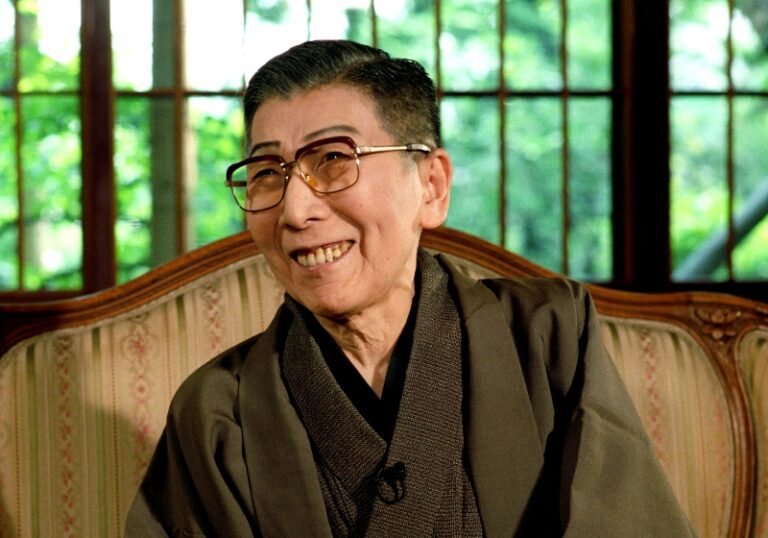
Nakamura Utaemon VI is widely judged to have been one of the supremely great onnagata (female role players) in the history of Japan’s traditional dance-drama form,Kabuki. He made his debut in 1922,a mere child of five,and went on to become one of the principal actors to lead Kabuki through the troubled postwar era. He subsequently performed all the leading female dances and roles in its rich and varied repertoire. Utaemon’s almost supernatural elegance and grace made him one of Kabuki’s finest proponents,and enabled him to break down the often rigid boundaries of national culture,language and tradition and dazzle very different types of audiences all over the world. In 1968 he received his country’s highest accolade,being designated ‘a Living National Treasure’.
Biography
As is the case with virtually every enduring form of traditional art,perception of the Kabuki theatre is currently what might be termed Janus-faced. For the non-Japanese spectator it tends to represent the very epitome of insular nationalist culture,exquisite but arcane,a monument to be dutifully visited rather than a spectacle to be enjoyed on its own level and for its own sake. For the Japanese themselves,by contrast,it is a fundamentally populist (and popular) genre,and its stylisation of dance and drama,performed by all-male actors to both on- and off-stage musical accompaniments,continues to thrill audiences today as much as it did in the feudal Middle Ages.
The earliest written and still extant record of Kabuki theatre dates from 1603,a period when it was in fact performed by casts of female entertainers. In 1629,however,the Shogunate government banned the presence of all women on the public stage,ostensibly for reasons of morality. Yet Kabuki’s popularity among the common folk was already such that it survived by the cunning expedient of switching to all-male casts,a number of whose actors were thus obliged to play female characters (exactly as in Elizabethan theatre in England). Over the years these so-called onnagata – female role players – gradually began to specialise in female impersonation; and,since the stylised refinement of their performances advanced step by step with that of Kabuki theatre itself,they are now regarded as so integral and organic a part of the form that it has become unthinkable to employ real women on the stage.
Nakamura Utaemon VI is widely judged to have been one of the supremely great onnagata in Kabuki history. Kabuki is an hereditary art and the sons of actors usually begin their careers in one of the,often very demanding,child roles. At this time they are given a Kabuki stage name,which may then change to one of higher rank as the actor progresses in skill and status throughout his career. Utaemon (Kabuki actors are always referred to by their forenames) was born the son of Nakamura Utaemon V,who was an equally famous female role-player,in 1917. He made his debut in 1922,a mere child of five; and as his unique talents were recognised he proceeded to rise through the system,assuming names of increasing prestige until,in 1951,he succeeded to that of Nakamura Utaemon VI,among the most elevated in the entire Japanese theatre. He was one of the principal actors to lead Kabuki through the troubled postwar era and subsequently went on to perform all the leading female dances and roles in its rich and varied repertoire.
‘One principle that governs all my work,’ he once said,‘is that a female role-player is not a real woman in terms of flesh and blood,but only a woman in the context of Kabuki. This is a principle that has guided me throughout my career.’
Utaemon’s almost supernatural elegance and grace made him one of Kabuki’s finest proponents,and both his acting and dancing were characterised by tremendous expression and power,an aesthetic achievement which enabled him to break down the often rigid boundaries of national culture,language and tradition and dazzle very different types of audiences all over the world. In 1960,when he was in his early forties,he made his first tour around the United States,and his appearance in the strange and magical Kabuki dramas was regarded as a revelation by some of the most celebrated and idolised of Hollywood actors. No less a luminary than Greta Garbo herself paid a call on him in his dressing room and is reported to have said of Kabuki artistry that it was ‘the most wonderful theatrical experience I have ever had.’
In 1968 Utaemon received his country’s highest accolade,being designated ‘a Living National Treasure’. He was later awarded the Bunka Kunsho,the ‘Order of Culture’,from the late Emperor Showa,and was also named President of the ‘Japan Actors’ Association’. His Praemium Imperiale prize,moreover,awarded in 1995,was the first – and,to date,only – such to have been attributed to a Japanese performer whose achievement is rooted in one of the most ancient and traditionalist of dramatic forms.
Utaemon contributed greatly to Kabuki’s increasing appeal and accessibility in those countries in which its codes and conventions were unknown. As far as non-Japanese are concerned,his most unforgettable performance was doubtless as the demented mother in Sumidagawa (or ‘Sumida River’),whose Noh version formed the basis for Benjamin Britten’s Curlew River. Such was his intensity in this role that,for Western audiences,he suspended not only disbelief – disbelief that he was indeed a woman – but also difference – the difference of culture that had for too long obscured Kabuki from the view of the outside world.
Gilbert Adair
He passed away on March 31,2001,Tokyo
Chronology
Receives International Theatre Institute Academy Award,Theatron Award,Academy of Arts Award
Participates in Grand Kabuki Tour in Europe (London,Munich).
Awarded Person of Cultural Merit
-
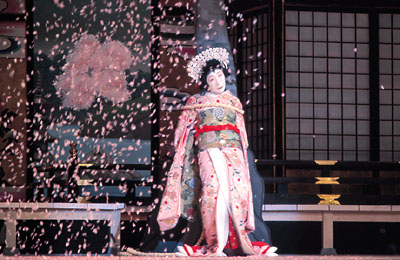
Gion Sairei Shinkoki
-

Utaemon with his collection
-
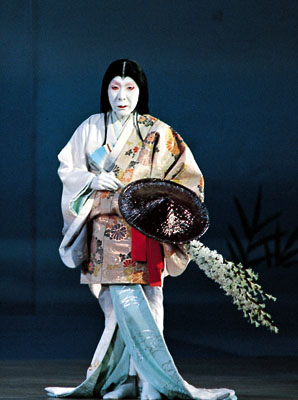
Sumidagawa
-
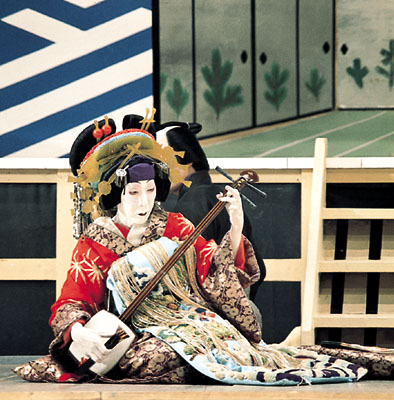
Dannoura Kabuto Gunki
-
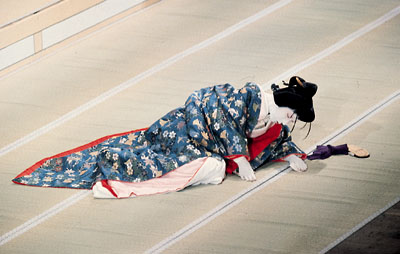
Kagamiyama Kokyo-no Nishikie
-
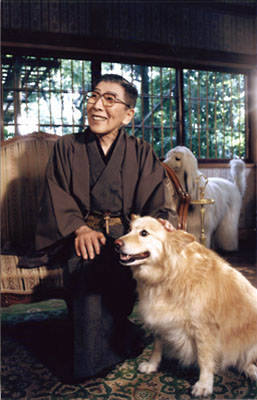
Utaemon at home, 1995.

